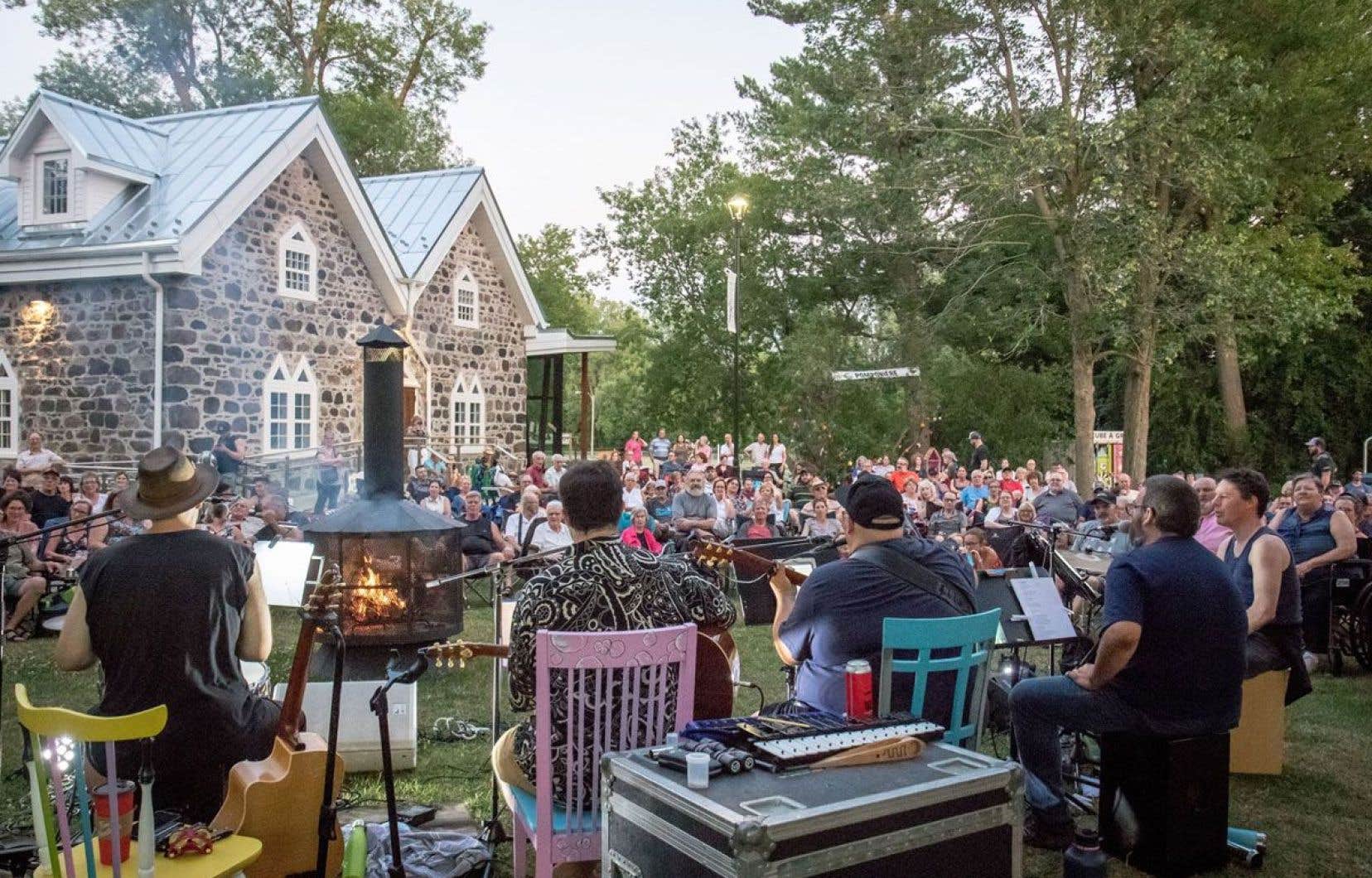This text is part of the special section Culture Montérégie
Several spaces belonging to the Montérégie heritage have been transformed into cultural and artistic places, with a rich program.
The Villebon House of Culture in Beloeil
In Beloeil, the Maison de la culture Villebon is established in a sumptuous residence built in 1844 for Alphonse Dumon. It was taken over by his nephew Vilbon Huot a few years later, who gave it his name. It is a traditional Quebec house inspired by the Regency and neoclassical styles. While the structure and facing are of exposed field stone, the monumental dormer window has a Serlian window embellished with small columns, capital pilasters, dentils and a shell-shaped motif — a real rarity in the MRC of the Vallée-du-Richelieu. Today, the building is part of the architectural heritage of the city.
Behind the imposing columns of the porch is a room that has been welcoming the public since 2008 and which promotes artistic encounters between members of the community. The shows are thus presented in a friendly atmosphere since the room has about sixty seats. The Maison de la culture Villebon, partner of the local cultural center, also hosts exhibitions and cultural mediation activities within its walls, thus making it possible to highlight both the heritage and the artists of the region.
630 Richelieu Street, Beloeil
The Deux-Rives Society Museum in Salaberry-de-Valleyfield
Considered a lever in terms of cultural and social influence, the Musée de société des Deux-Rives (MUSO) is housed in a former Protestant church dating from 1882 in the city center, located at the time at the gates of the industrial complex of the cotton fiber processing plant Montreal Cotton Company. This place is a treasure of local real estate heritage, since the building has retained the main elements that are characteristic of it, such as the bell tower and the stained glass windows.
The cultural establishment of history, art and heritage, which since 2011 has proudly offered to delve into its industrial past, preserves in particular everything related to the historic region of Suroît, which covers the administrative territory of the municipalities. county regions of Haut-Saint-Laurent, Beauharnois-Salaberry and Vaudreuil-Soulanges.
Among its current programming, MoCo. The fabric of a city traces the history of industrialization in Canada from the beginning of the 20the century thanks to some fifty testimonies, hundreds of photographs and important artefacts. The exhibition is accessible throughout the year. Until September, Archeology and Criminal Investigations highlights the essential work of bioarchaeologists in criminal investigations – sometimes hundreds of years old! -, while Coats, stoles and muffs. Fur in all its forms! goes back in time to the time of the establishment of the first settlers in New France to tell the story of the fur trade, including beaver trapping, which is the basis of the first trade between Europeans and First Nations.
In addition to temporary exhibitions and its collections, the museum organizes interpretation activities and participates in the education and awareness of visitors.
21 Dufferin Street, Salaberry-de-Valleyfield
The Trinity Estate in Saint-Jean-sur-Richelieu
The Domaine Trinity, thanks to its luxuriant vegetation and its remarkable architecture combining tradition and modernity, is transformed during the summer season into an ephemeral place conducive to celebrations, meetings, relaxation, but also to artistic expression.
Exhibitions, outdoor shows and free cultural activities punctuate the summer of Montérégians of all ages who also have at their disposal a mini urban orchard, a public piano and a loan service for game, reading and listening. Until the beginning of June, birds are also in the spotlight at Domaine Trinity through the exhibition The birds here. Members of the Haut-Richelieu Ornithology Club exhibit their photographs taken during observation expeditions.
Note that the Domaine Trinity is located on the site of the Anglican Trinity Church, which was built in 1841 near the Christie Manor. The church grounds include the Trinity Center of Art, the Epiphany House and a large green space where various cultural activities are presented.
360 McGinnis Street, Saint-Jean-sur-Richelieu
This content was produced by the Special Publications team of the Duty, pertaining to marketing. The drafting of Duty did not take part.
